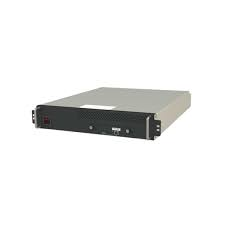Whatsminer M63S Hydro Cooling Fluid Maintenance Schedule: Ensuring Peak Performance for Your Bitcoin Miner
The Whatsminer M63S Hydro has quickly become a standout in the world of Bitcoin mining, offering an impressive hashrate of 390 TH/s coupled with an innovative hydro cooling system. This enterprise-grade miner is designed for professional mining operations, delivering exceptional performance and reliability. However, like any high-performance machine, its longevity and efficiency depend on proper maintenance—particularly when it comes to its advanced cooling system.
In this article, we’ll explore the importance of maintaining the cooling fluid in the Whatsminer M63S Hydro, provide a detailed maintenance schedule, and explain how this practice can enhance your mining operation’s productivity and profitability.

Why Cooling Fluid Maintenance Matters
The Whatsminer M63S Hydro’s hydro cooling system is a game-changer in the mining industry. Unlike traditional air-cooled systems, which rely on fans to dissipate heat, the hydro cooling system uses a specialized coolant to regulate temperature. This approach offers several advantages:
- Superior Thermal Management: The coolant absorbs and dissipates heat more efficiently than air, ensuring the miner operates within optimal temperature ranges (5-45°C).
- Extended Hardware Lifespan: By preventing overheating, the cooling system reduces wear and tear on internal components, prolonging the miner’s operational life.
- Consistent Performance: Stable temperatures ensure the miner maintains its peak hashrate of 390 TH/s, even under heavy workloads.
However, the cooling fluid itself requires regular attention. Over time, contaminants, evaporation, or degradation can reduce its effectiveness, potentially leading to overheating, reduced performance, or even hardware failure.
Cooling Fluid Maintenance Schedule
To keep your Whatsminer M63S Hydro running at its best, follow this practical maintenance schedule.
#### 1. Daily Checks While daily maintenance is minimal, it’s important to monitor the cooling system for any visible issues:
- Inspect for Leaks: Check the coolant lines and connections for signs of leakage. Even a small leak can compromise the system’s efficiency.
- Temperature Monitoring: Use the miner’s interface to ensure operating temperatures remain within the recommended range (5-45°C).
#### 2. Weekly Maintenance Once a week, perform a more thorough inspection:
- Coolant Level Check: Verify that the coolant level is within the recommended range. The M63S Hydro requires approximately 1 liter of coolant per unit. If the level is low, top it up with the manufacturer-recommended coolant.
- System Pressure Check: Ensure the cooling system maintains proper pressure. A drop in pressure could indicate a leak or other issue.
#### 3. Monthly Maintenance Monthly maintenance involves deeper checks and preventive measures:

- Coolant Quality Inspection: Examine the coolant for signs of contamination, such as discoloration or debris. Contaminated coolant should be replaced immediately.
- System Flush: If the coolant appears degraded or contaminated, flush the system and replace it with fresh coolant. This process helps remove buildup that can impede heat transfer.
#### 4. Quarterly Maintenance Every three months, conduct a comprehensive review of the cooling system:
- Component Inspection: Check hoses, connectors, and the coolant reservoir for wear or damage. Replace any components showing signs of deterioration.
- Performance Analysis: Review the miner’s performance metrics to ensure the cooling system is functioning optimally.
#### 5. Annual Maintenance At least once a year, perform a full system overhaul:
- Complete Coolant Replacement: Even if the coolant appears clean, replace it annually to maintain peak performance.
- Professional Servicing: Consider having a certified technician inspect the system for any potential issues.
Choosing the Right Coolant
The choice of coolant is critical to the performance of your Whatsminer M63S Hydro. Always use the manufacturer-recommended coolant, as it is specifically formulated for the miner’s hydro cooling system. Using incompatible coolants can lead to corrosion, reduced efficiency, or system failure.
Benefits of Regular Cooling Fluid Maintenance
Adhering to a consistent maintenance schedule offers several tangible benefits for your mining operation:
- Maximized Uptime: Prevent unexpected downtime caused by cooling system failures.
- Optimal Performance: Ensure the miner consistently delivers its full 390 TH/s hashrate.
- Extended Equipment Life: Reduce wear and tear, lowering long-term replacement costs.
- Energy Efficiency: A well-maintained cooling system consumes less power, reducing operational expenses.
- Environmental Sustainability: Efficient cooling reduces energy consumption, contributing to greener mining practices.
Real-World Applications
In large-scale mining operations, the Whatsminer M63S Hydro’s hydro cooling system offers significant advantages over traditional air-cooled miners. For example, a mining farm in Texas reported a 15% reduction in energy costs after switching to the M63S Hydro, thanks to its efficient cooling system. However, the farm’s success also depended on a strict maintenance regimen, including regular coolant checks and replacements.

Conclusion
The Whatsminer M63S Hydro is a powerful tool for Bitcoin mining, but its advanced hydro cooling system requires diligent care to maintain peak performance. By following the maintenance schedule outlined above, you can ensure your miner operates efficiently, reliably, and profitably.
Investing time in cooling fluid maintenance not only protects your equipment but also maximizes your return on investment. In the competitive world of cryptocurrency mining, every advantage counts—and a well-maintained Whatsminer M63S Hydro is a step ahead of the rest.

Whether you’re running a small operation or managing a large-scale mining farm, adopting these best practices will help you harness the full potential of this cutting-edge mining technology.